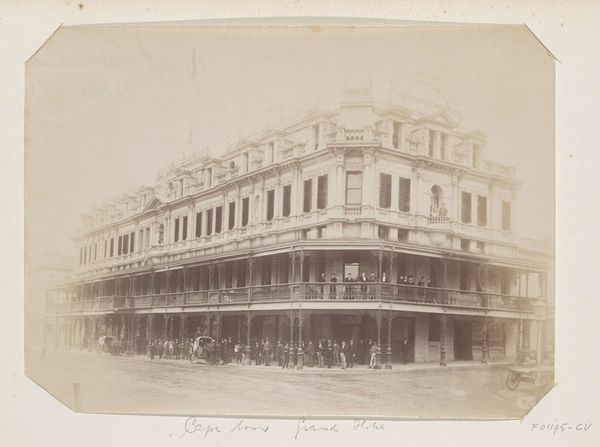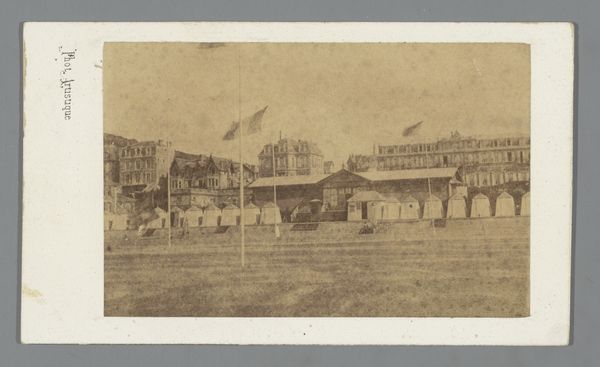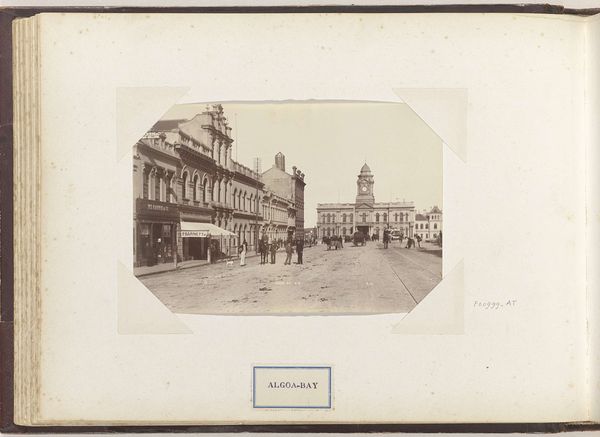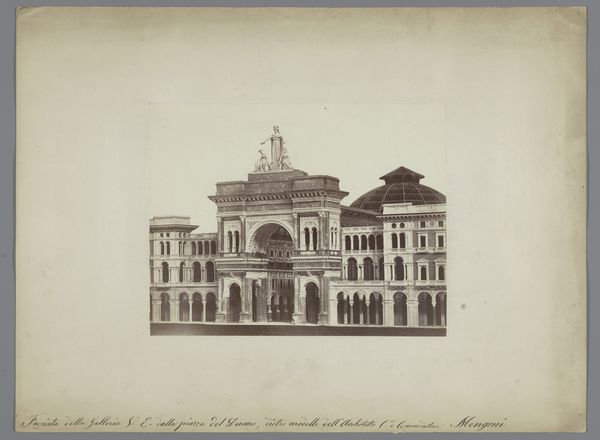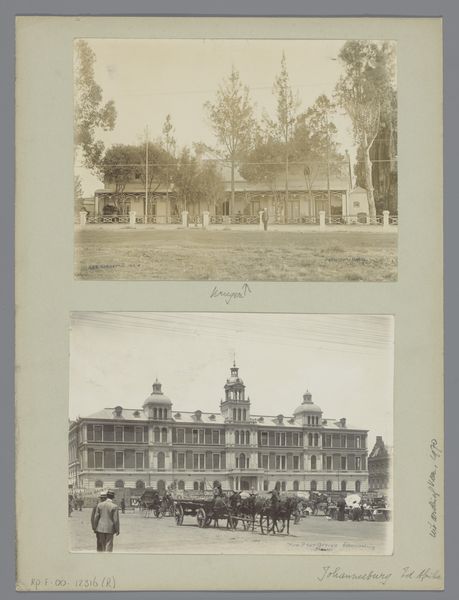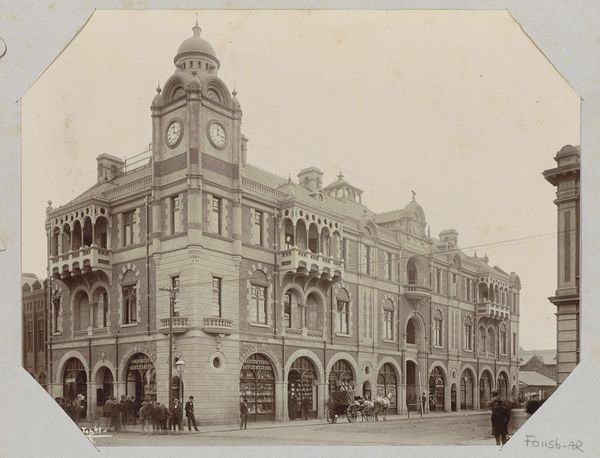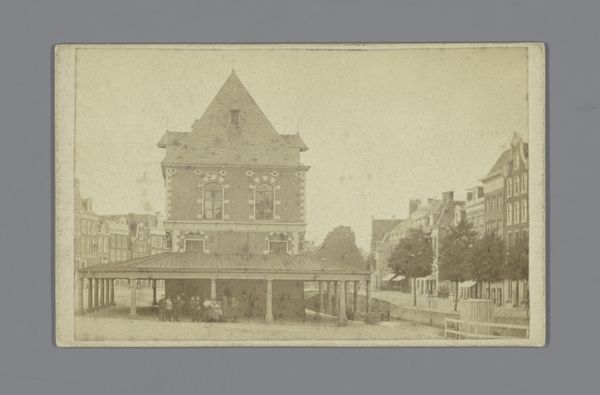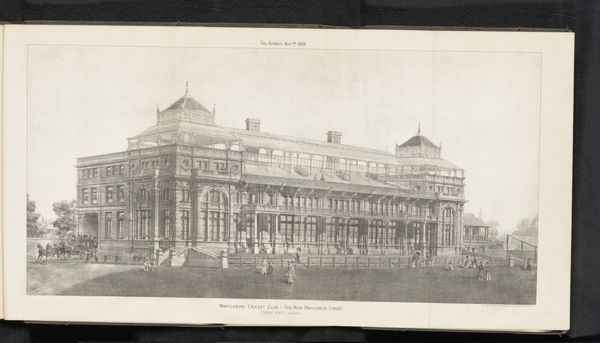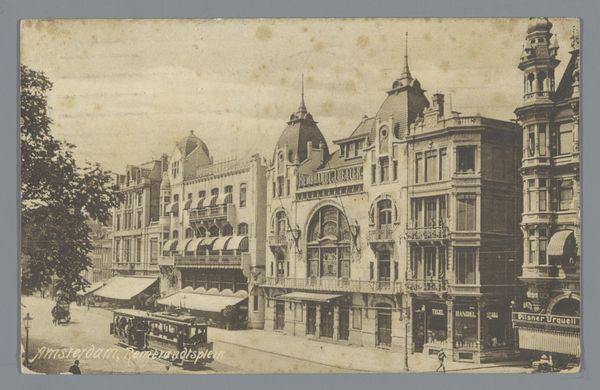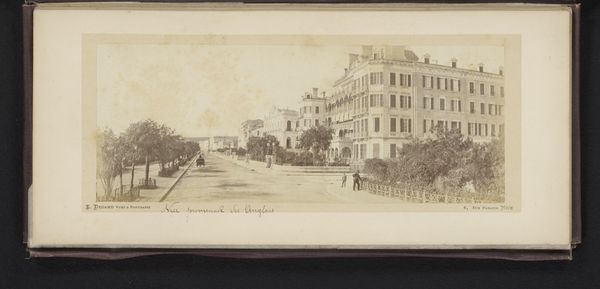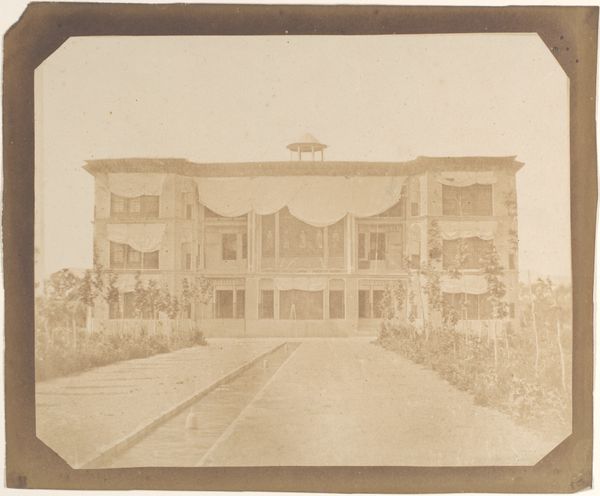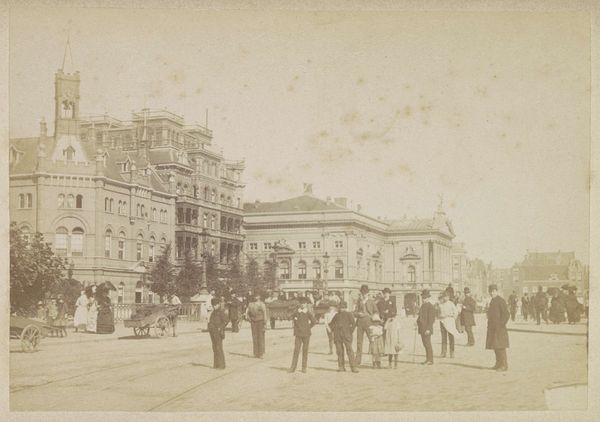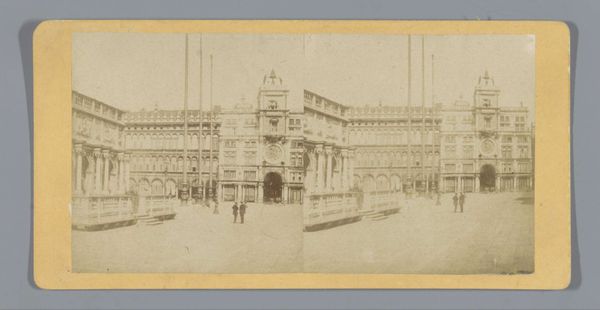
#
photo of handprinted image
#
aged paper
#
toned paper
#
light pencil work
#
pencil sketch
#
fading type
#
coloured pencil
#
watercolour illustration
#
watercolor
#
historical font
Dimensions: height 81 mm, width 108 mm
Copyright: Rijks Museum: Open Domain
Curator: Welcome. We're looking at "Palace Hotel te Scheveningen," dating from around the 1900s. Notice how the tonal range gives a slightly sepia feel that evokes that turn of the century style. Editor: The past, absolutely, and faded grandeur comes to mind, like an old postcard discovered in your grandmother's attic. Is it me, or does this have that peculiar haunted quality of a scene frozen in time? The light…it's like a gentle mist has settled over everything. Curator: Precisely! It has an intriguing tonal unity. The pencil and watercolor contribute a consistent diffused light, subtly modulating form, yes. See how the architectural detail almost dissolves into the background, lending to that "misty" quality you mentioned. Semiotically, that dissolving quality speaks to ephemerality and nostalgia, if you agree? Editor: Sure. A meditation on impermanence, but with charm! Look at the way those horse-drawn carriages linger near the hotel entrance. It's a tableau of genteel society…ghosts elegantly arriving for a long-ago summer season. There is a real romantic narrative to that… don't you think? Curator: Yes, and from a compositional view, the handwritten label gives another clue that this is someone's own private record of seeing that hotel. Not really intended to have wider cultural distribution. That intimate connection is palpable and shapes our own interpretation of this piece today, as visitors and appreciators of its form. Editor: Totally. This photograph acts almost as a personal doorway, right? It takes me away from this space and directly there. What a thought! So evocative that such a simple arrangement of light, architecture, and handwriting could ignite all these imaginations. Curator: Agreed. There is also an intersection with historical and cultural documentation within the work that’s unavoidable when it’s seen at present, isn’t it? The Palace Hotel exists no longer, of course. Editor: Precisely. Perhaps the artwork itself carries that ephemeral spirit too. I will surely keep all these interpretations with me as I look again! Curator: I shall do the same! Thank you.
Comments
No comments
Be the first to comment and join the conversation on the ultimate creative platform.
